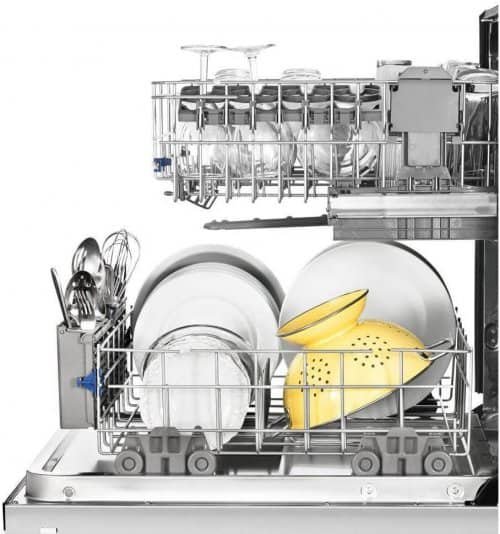A dishwasher is a machine for cleaning dishes and usually uses around 6-12 amps. The average dishwasher will use about 10 amps. It’s important to know how many amps your dishwasher uses so that you can properly size the circuit breaker. A dishwasher that uses too many amps can trip the breaker and cause an electrical outage.
Table of Contents
Does Dishwashers Use a Lot of Water and Electricity?
Dishwashers have long been considered energy-efficient appliances. But how much water and electricity do dishwashers really use?
According to the National Resource Defense Council, the average dishwasher uses six gallons of water per cycle. The average family does about 300 loads of dishes per year, which means they’re using 1,800 gallons of water just to wash their dishes. That’s almost as much water as the average person uses in a day.
As for electricity, dishwashers use about 0.5 kWh per cycle, which adds up to 150 kWh per year. That’s about $15 worth of electricity per year, or 1% of the average household’s total electricity use.
So while dishwashers may not be the most energy-intensive appliance in your home, they still use a significant amount of resources.
How Much Water Does a Dishwasher Use?
According to the United States Environmental Protection Agency, dishwashers can use between 4 and 16 gallons of water per cycle. The average dishwasher uses about 6 gallons of water per cycle. This means that a dishwasher can use up to 300 gallons of water per month.
How Much Electricity Does a Dishwasher Use?
Dishwashers have become a staple in most kitchens as they save time and energy by doing the dishes for you. But how much electricity does a dishwasher use?
As we already discussed about the average dishwasher uses about 15 gallons of water per cycle and about 1 kWh of electricity. That’s about the same amount of electricity as a clothes washer, but less than half the amount of water. The average dishwasher cycle takes about an hour to complete.
So, how much does it cost to run a dishwasher? It depends on your electricity rate, but on average it costs about $0.15 per cycle. That means it costs about $1.50 to run a full load of dishes. Not bad!
What are The Benefits of Using a Dishwasher?
There are many benefits of using a dishwasher over washing dishes by hand. Dishwashers use less water than washing dishes by hand, so they are more environmentally friendly. They also use less energy than washing dishes by hand, which can save you money on your utility bills. Dishwashers also sanitize your dishes better than you can, so they are more hygienic.
What are The Drawbacks of Using a Dishwasher?
While dishwashers have a lot of advantages, there are also some disadvantages to using one. One of the main drawbacks is that Its not Affordable, can be costly. Dishwashers use a lot of water and electricity, so your utility bills will be higher if you use one. They also require special detergents that can be expensive.
Another downside to dishwashers is that they can take a long time to wash your dishes. If you’re in a hurry, you may not want to wait for an hour or more for your dishwasher to finish its cycle. And, if you have a large family or entertain often, you may find yourself having to run the dishwasher multiple times a day, which can be time-consuming.
Finally, dishwashers can sometimes damage your dishes if they’re not used properly.
Dishwashers have been around for over 100 years, but they are still a source of contention in many households. While some people swear by their dishwasher, others find them to be a huge inconvenience.
How Many Amps Does a Dishwasher Use?
A dishwasher typically uses about 15 amps.
Conclusion:
Dishwashers use a lot of amps. They use about 6-20 amps when they are running. So, if you have a dishwasher that is using about 15 amps, that means it is using about 3000 watts of power. Therefore, it is important to make sure that your dishwasher is properly wired and that you have the proper circuit breaker for it.

